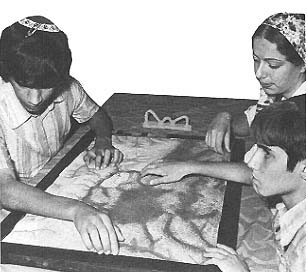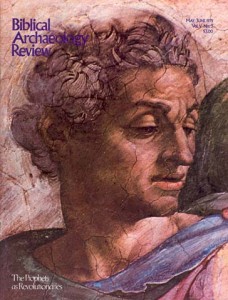
As every blind person knows, he can “see” what he can touch.
Archaeology, the study of the material remains of ancient cultures, can be touched and therefore “seen” by the blind. Two experimental programs applying this principle have been developed by BAR’s Jerusalem correspondent, James Fleming, to make the Holy Land “visible” to the blind.
The first program is a one-semester course for blind high school students in the history and archaeology of Jerusalem. Monthly field trips are the high point of the course. But before the students leave the classroom, they know where they are going. Fleming uses specially designed, highly accurate relief maps to teach the students the geography of the site. The students feel their way across the city before they leave the schoolroom.
The students’ first trip is to Hezekiah’s tunnel, an S-shaped labyrinth which winds its way beneath the original site of Biblical Jerusalem, also known as the City of David. King Hezekiah of Judah dug the tunnel from both ends, through the rock of the hill of Ophel, to provide Jerusalem with water from the Spring Gihon during the siege of Sennacherib which Hezekiah astutely foresaw. The siege occurred in 701 B.C. and is described in 2 Kings 19–20 and 2 Chronicles 32. The Bible specifically refers to Hezekiah’s tunnel. Because they were well supplied with water, the Jerusalemites were able to withstand the siege and Sennacherib ultimately withdrew.
Already a library member? Log in here.
Institution user? Log in with your IP address.

